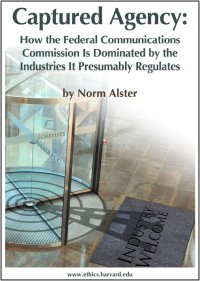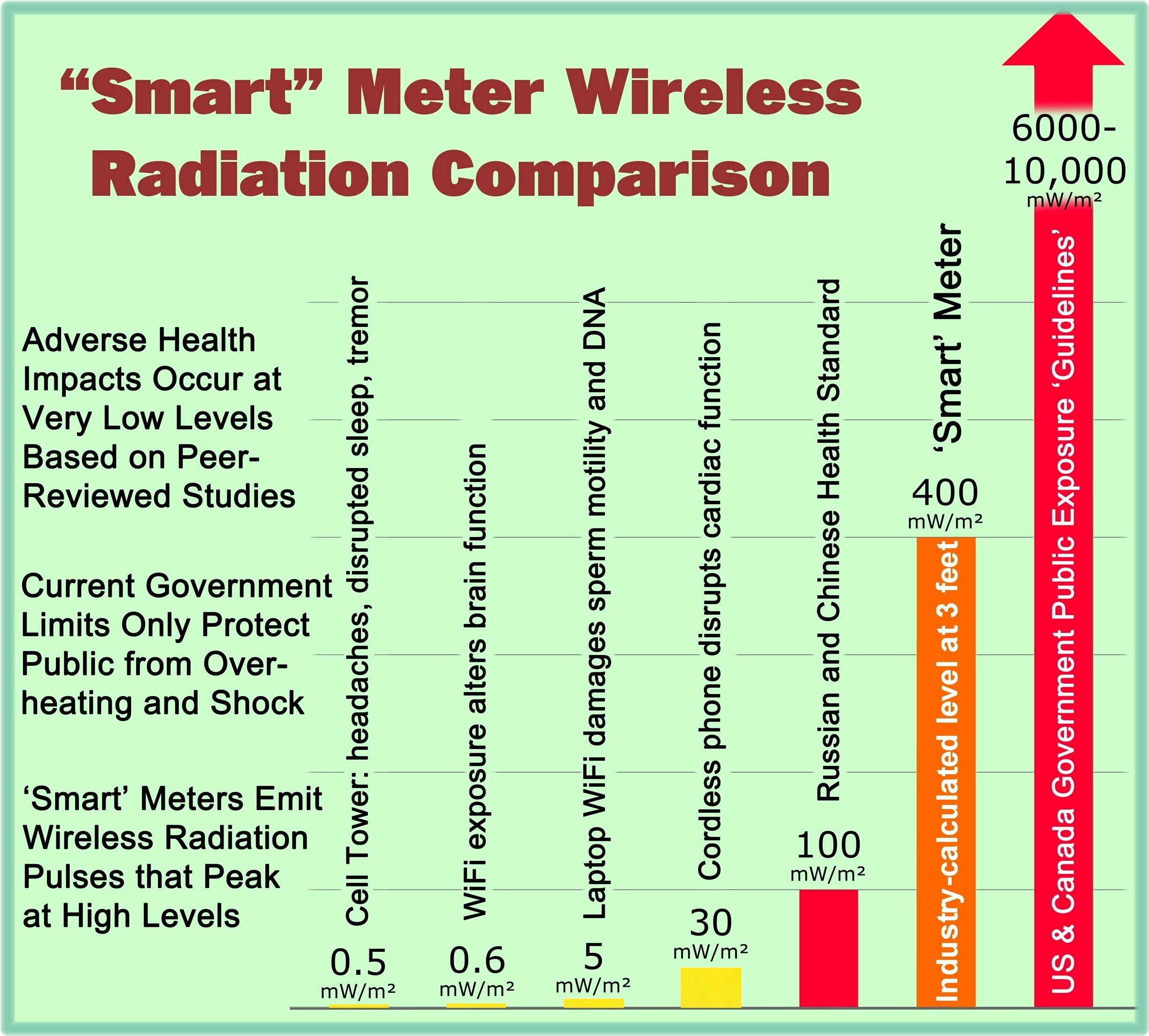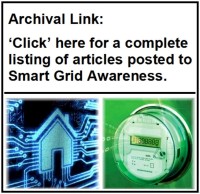 “The vision of ‘talking’ cars that avoid crashes is well on the way to becoming a reality. And we’re not just talking about cars talking to cars, but about cars talking to bikes, trucks talking to motorcycles, and even buses talking to pedestrians. This promises to significantly reduce the number of deaths and injuries on our nation’s roads while unleashing a new wave of innovation from advanced traffic management systems and smart mobility apps to real-time traffic, transit and parking information.”
“The vision of ‘talking’ cars that avoid crashes is well on the way to becoming a reality. And we’re not just talking about cars talking to cars, but about cars talking to bikes, trucks talking to motorcycles, and even buses talking to pedestrians. This promises to significantly reduce the number of deaths and injuries on our nation’s roads while unleashing a new wave of innovation from advanced traffic management systems and smart mobility apps to real-time traffic, transit and parking information.”
— Scott Belcher, President and CEO of the Intelligent Transportation Society of America
The geniuses at the National Highway Traffic Safety Administration (NHTSA) are so concerned about your “safety,” they have decided to take it into their own hands and make it mandatory that your car wirelessly communicate with other vehicles on the road.
As with so many other aspects of life, there is a top down push to remove control from the individual and transfer it to the “collective,” typically justified within the context of the “war on terror” or “it’s for your own good.”
So, what we have here is “big brother” in combination with “more wireless communications.” For many people the idea of millions of vehicles on the road talking to each other using pulsed radiofrequency (RF) radiation signals is too horrifying to imagine. … And what are the chances that these communications systems will cause more problems than they create? Expensive electronics that will fail, confuse or otherwise overwhelm the driver with erroneous or conflicting information.
 Although the headline for this article deals with wireless vehicle to vehicle communications, further review shows that this “program” would eventually evolve into a massive communications network involving satellite tracking, traffic control, and communications with infrastructure including traffic signals.
Although the headline for this article deals with wireless vehicle to vehicle communications, further review shows that this “program” would eventually evolve into a massive communications network involving satellite tracking, traffic control, and communications with infrastructure including traffic signals.
Based upon a review by SkyVision Solutions of NHTSA documents:
- “Anonymous data from connected vehicles will be open to the public.”
- “Through in-vehicle warnings, drivers would be alerted to imminent crash situations, such as merging trucks, cars in the driver’s blind side, or when a vehicle ahead of them brakes suddenly.”
- “Anonymous signals in vehicles would help generate up-to-the-minute data on how, when, and where vehicles travel in real time.”
- “Connected vehicle technology could give motorists the real-time information they need to make ‘greener’ transportation choices. Information about traffic conditions would help motorists eliminate unnecessary stops and let their vehicles reach optimal fuel-efficiency.”
- “Connected vehicle systems are based on Dedicated Short Range Communications (DSRC)—a technology similar to Wi-Fi.
- “An analysis of communication alternatives has shown that Dedicated Short Range Communications (DSRC) at 5.9 GHz is the only communication option at this time capable of effectively and reliably providing this safety-of-life capability.”
- “V2V communication … refers to the exchange of data over a wireless network that provides critical information that allows each vehicle to perform calculations and issue driver advisories, driver warnings, or take pre-emptive actions to avoid and mitigate crashes. Data that may be exchanged [at a rate of 10 times per second] include each vehicle’s latitude, longitude, time, heading angle, speed, lateral acceleration, longitudinal acceleration, yaw rate, throttle position, brake status, steering angle, headlight status, turn signal status, vehicle length, vehicle width, vehicle mass, bumper height, and the number of occupants in the vehicle.”
Each vehicle’s communications system as currently envisioned would have a range of about 300 yards, which is a little more than three seconds for cars at highway speeds, but considerably longer in other settings where it is intended to reduce accidents, like city and suburban intersections. The Federal Communications Commission (FCC) has already allocated 75 MHz of spectrum in the 5.9 GHz band for use by Intelligent Transportations Systems (ITS) vehicle safety and mobility applications. DSRC was developed with the goal of enabling technologies that support safety applications and communication between vehicle-based devices and infrastructure to reduce collisions.
Based upon a review of Department of Transportation documents, the primary benefits of the so-called “V2V communications” system are to “save lives” and “prevent or mitigate accidents.” The potential drawbacks to the system are listed as “dependency, complacency, and over-reliance.” There is not the slightest indication that increased RF radiation exposure for the population has been considered as part of any cost/benefit review for this program.

According to a report in the Detroit News: “Transportation Secretary Anthony Foxx said the National Highway Traffic Safety Administration will begin working on a proposal to require vehicle-to-vehicle communication in future cars and trucks. He said he hopes to propose the regulation by the time the Obama administration leaves office in January 2017. NHTSA gives automakers at least 18 months of lead time before mandating new technology.”
Official Announcement from National Highway Traffic Safety Administration (NHTSA)
 U.S. Department of Transportation Announces Decision to Move Forward with Vehicle-to-Vehicle Communication Technology for Light Vehicles
U.S. Department of Transportation Announces Decision to Move Forward with Vehicle-to-Vehicle Communication Technology for Light Vehicles
WASHINGTON – The U.S. Department of Transportation’s (DOT) National Highway Traffic Safety Administration (NHTSA) has announced that it will begin taking steps to enable vehicle-to-vehicle (V2V) communication technology for light vehicles. This technology would improve safety by allowing vehicles to “talk” to each other and ultimately avoid many crashes altogether by exchanging basic safety data, such as speed and position, ten times per second.
“Vehicle-to-vehicle technology represents the next generation of auto safety improvements, building on the life-saving achievements we’ve already seen with safety belts and air bags,” said U.S. Transportation Secretary Anthony Foxx. “By helping drivers avoid crashes, this technology will play a key role in improving the way people get where they need to go while ensuring that the U.S. remains the leader in the global automotive industry.”
DOT research indicates that safety applications using V2V technology can address a large majority of crashes involving two or more motor vehicles. With safety data such as speed and location flowing from nearby vehicles, vehicles can identify risks and provide drivers with warnings to avoid other vehicles in common crash types such as rear-end, lane change, and intersection crashes. These safety applications have been demonstrated with everyday drivers under both real-world and controlled test conditions.
The safety applications currently being developed provide warnings to drivers so that they can prevent imminent collisions, but do not automatically operate any vehicle systems, such as braking or steering. NHTSA is also considering future actions on active safety technologies that rely on on-board sensors. Those technologies are eventually expected to blend with the V2V technology. NHTSA issued an Interim Statement of Policy in 2013 explaining its approach to these various streams of innovation. In addition to enhancing safety, these future applications and technologies could help drivers to conserve fuel and save time.
V2V technology does not involve exchanging or recording personal information or tracking vehicle movements. The information sent between vehicles does not identify those vehicles, but merely contains basic safety data. In fact, the system as contemplated contains several layers of security and privacy protection to ensure that vehicles can rely on messages sent from other vehicles and that a vehicle or group of vehicles would be identifiable through defined procedures only if there is a need to fix a safety problem.
“V2V crash avoidance technology has game-changing potential to significantly reduce the number of crashes, injuries and deaths on our nation’s roads,” said NHTSA Acting Administrator David Friedman. “Decades from now, it’s likely we’ll look back at this time period as one in which the historical arc of transportation safety considerably changed for the better, similar to the introduction of standards for seat belts, airbags, and electronic stability control technology.”
V2V communications can provide the vehicle and driver with 360-degree situational awareness to address additional crash situations – including those, for example, in which a driver needs to decide if it is safe to pass on a two-lane road (potential head-on collision), make a left turn across the path of oncoming traffic, or in which a vehicle approaching at an intersection appears to be on a collision course. In those situations, V2V communications can detect threats hundreds of yards from other vehicles that cannot be seen, often in situations in which on-board sensors alone cannot detect the threat.
.
Update from Consumer Watchdog on Driverless Cars, May 2015
Driverless cars have safety issues and cause accidents on public streets. There are privacy concerns as well.
.
Follow-up Blog Posting: Should People Be Allowed to Drive Cars?
Relevant Links of Interest:
http://www.safercar.gov/ConnectedVehicles/index.html; note that safecar.gov has discontinued this link; here is a saved image of what it contained:
NHTSA Preliminary Statement of Policy Concerning Automated Vehicles
Additional References:
http://www.utires.com/blog/road-safety-overview/#CarSafetyTechnology






Pingback: Smart cars that drive themselves coming soon – theevolutionofosiris
Mandatory wireless is unfair to electrically sensitive people, as well as to young and unborn children. While it may have some advantages, these are outweighed by downsides of broadcasting. Please abandon this idea.
Pingback: formulate a brief comment about the dangers of automating vehicles using wireless technology | Smart Meter News
This world is becoming unlivable because of these insane people. Imagine what this will do to wildlife. They will just wipe out everything. Nothing can live in such an environment. I am one of the unfortunate ones who can feel anytime I am near a smart meter. Why are they not listening to us? Surely they must have family members they should be concerned about. Sometimes I wonder if they are even human. There is no logical explanation for what is going on now.
Pingback: U.S. Proceeding with Mandatory Wireless ‘Vehicle to Vehicle’ Communications | EMFacts Consultancy
Please be aware that the powers that be want everything in your life to be digitalized and “report” data. Obama just gave money to EPA to encourage more “smart” appliances, which also may be mandated at some point (if they already aren’t). Look at FCC site, where they recently called for a RUSH on input to test digital undefined and unnamed systems, while not “disturbing” consumer cellular connections.
A technocracy can only work in a large country using technologies such as are being deployed. Power corrupts. Absolute power, well, you know the rest.
Tell your federal lawmakers to STOP smart cars and smart appliance mandates. Consumers DESERVE choices, at least in the America I know and love.
While this will be a public health nightmare it will be a hackers wet dream. Imaging the ability to hack a vehicles computer and cause carnage on the highways – just like Grand Theft Auto! Another implication is it will probably mean that all ‘non-smart’ vehicles will be made illegal probably by a refusal to re-register older vehicles.
Dear Readers,
This is absolutely nuts, stupid, crazy or whatever one wants to call it; soon there will be even more Microwave Poisons. As if we haven’t got enough Microwave Poisons already hitting us, with dopey Microwave smart arsed meters, baby monitors, Microwave telephones = same things as mobile phones. Gord save us all from this MADNESS.